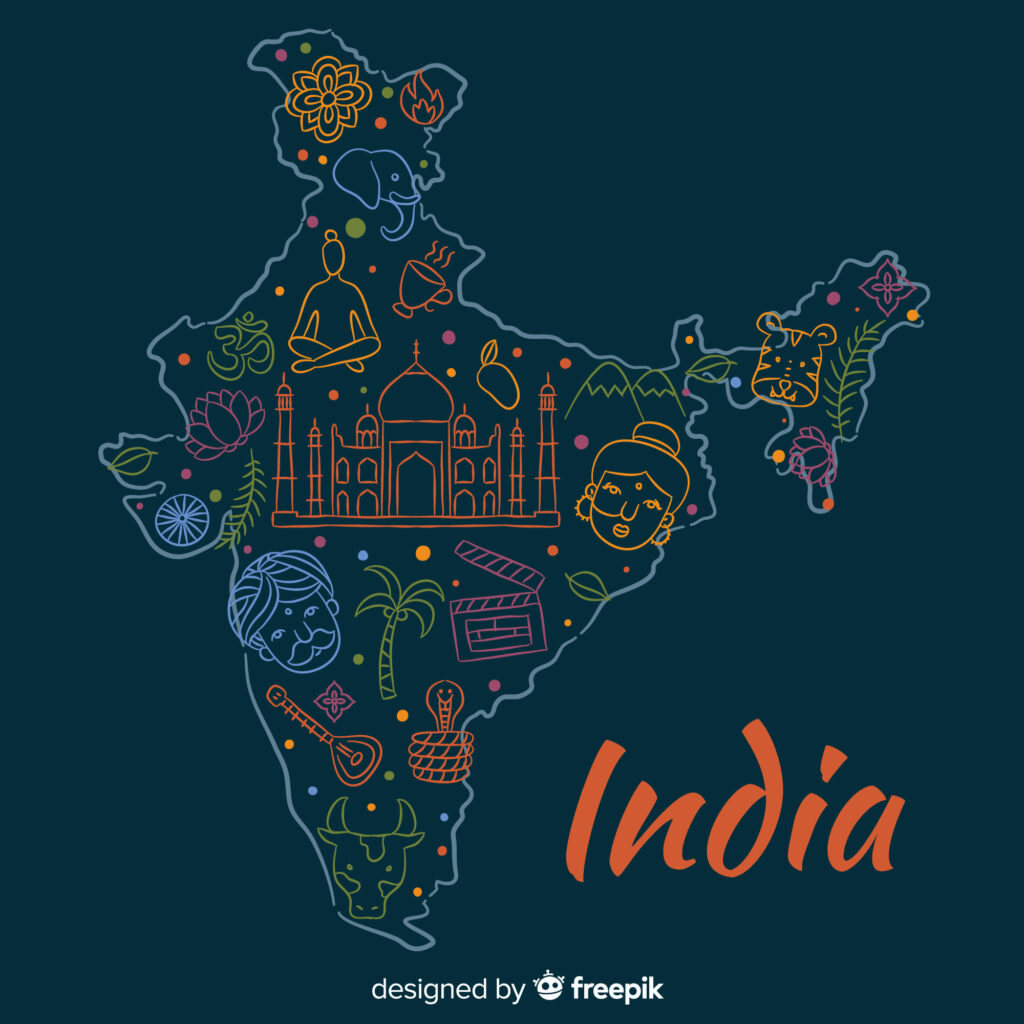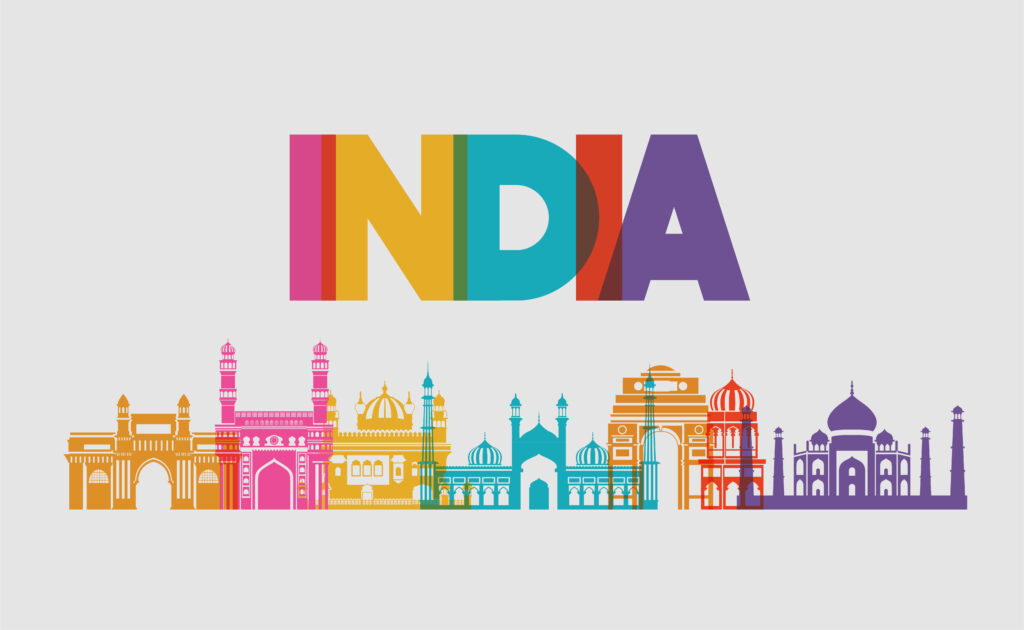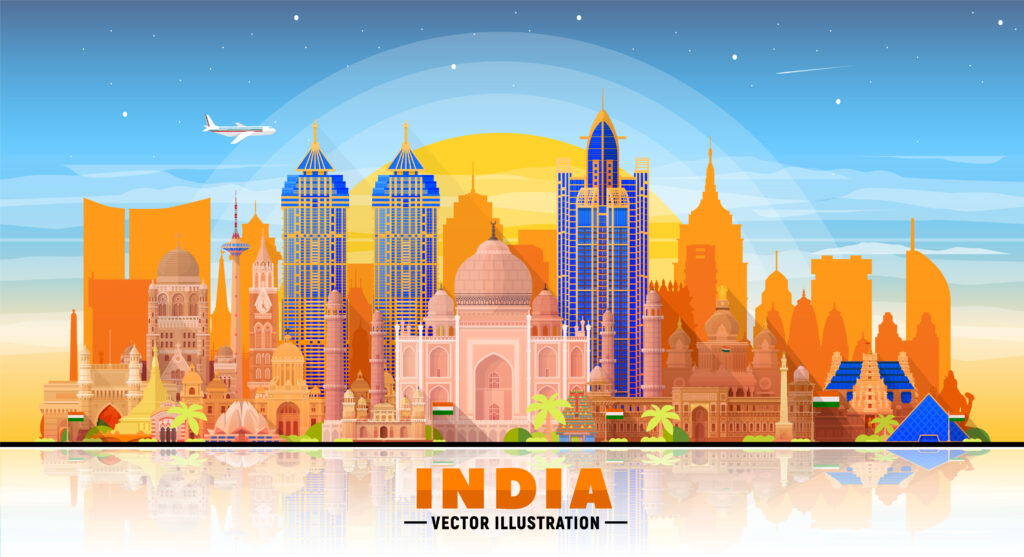
India: A Land of Ancient Diversity and Modern Change India
A country where ancient civilizations seamlessly coexist with the frenetic pace of modern technology. It is a land of stories, of colors, of contradictions and celebrations, of profound spirituality, and constant creativity. Formally called Bharat in Hindi, India is not just a country it is an experience, and it has grown and evolved through time. A Historic Journey India has a history that spans over 5,000 years, where the Indus Valley Civilization is noted as one of world’s earliest urban civilizations. Harappa and Mohenjo-Daro, were cities that were sophisticated and planned, with drainage systems and trade networks. Over centuries, Indian became an amalgamation of cultures and dynasties – the Maurya’s , the Guptas, the Mughals, and the Marathas. The British Empire arrived in the 18th century, during a time of colonialism that was subsequently met with a difficult and devolved struggle from many to gain independence.
In the year 1947, on August 15th, India finally gained independence from British rule. With iconic leaders such as Mahatma Gandhi, Jawaharlal Nehru, Sardar Patel, Subhash Chandra Bose and others leading the charge, India was free, which initiated the country’s journey into democratic life which continues today. Cultural Mosaic India is a cultural superpower and a nation of cultures. With 28 states and 8 union territories and over 2000 ethnic groups, India is a mosaic of culture. This cultural mosaic is reflected in nearly every aspect of life, from festivals, languages, music and dress. Languages and Religion India recognizes 22 languages under the Eighth Schedule of the Constitution, with Hindi and English being the most widely spoken. However, India is home to a staggering 1600 dialects. In terms of religion, India is the birthplace of four major world religions, Hinduism, Buddhism, Jainism and Sikhism. India is home to significant populations of Muslims, Christians, and Jews, Parsis and others. India is one of the world’s great examples of secularism and tolerance.

Festivals India is a land of festivals. Every part of the country celebrates different occasions, which are often linked to mythology, farming or religion. For instance, every festival from Diwali (the festival of lights) to Eid, Christmas, Durga Puja, Bihu, Pongal, Onam and Holi is filled with color, joy and importance. Cuisine Indian cuisine is as diverse as the people of the country. Since each region has its own specialty, it has its own primary taste, richness or level of spice in its food. The staple diets of rice, wheat, dahl and spices, and local ingredients make each region unique. Today, the world is familiar with Indian dishes like butter chicken, biryani, masala dosa , pani puri and countless sweets (gulab jamun, rasgulla, jalebi, etc.).
Geographic Diversity What a geographic expanse India has! The impressive Himalayas rise in the north, while the Indian Ocean spreads to the south. The Thar Desert borders the west, while verdant Northeast India is home to some of the country’s richest forests. The Ganges flows through the center of the country and is sacred to millions of people writing it makes land and spirits fertile. The country is vast in wildlife, home to tigers, elephants, leopards, and over 1,300 kinds of birds, and protected in places like Jim Corbett National Park, Kanha, and Kaziranga they have a vast range of biodiversity. India is characterized by six climatic zones, covering the wide range of agriculture with its aplenty in Kashmir to tropical regions in Kerala, lifestyles, and tourism experiences. Economic and Technological Powerhouse After independence, India adopted a ‘mixed economy’ it has progressed rapidly over the decades to take its place as the fifth largest economy (as of 2024).
Key Sectors Agriculture
It continues to be the mainstay of rural livelihoods. Industry: India is the major hub for textiles, automobiles, pharmaceuticals, and steel.IT and Services: Cities such as Bangalore, Hyderabad, and Pune are known as the technology hubs of the world, best known for software exports and fostering the development of new concepts. Startups and the Digital Economy: India has the third largest startup ecosystem in the world, with startups challenging how they approach education, finance, healthcare, and logistics. Digital India initiatives, fintech revolutions such as UPI, and increased mobile penetration have initiated transformation in remote areas at lightning speed. Youth Youth and Education India has the largest proportion of youth in the world, with over 65% of its population under the age of 35. This demographic advantage is referred to as the “demographic dividend”, and it provides the country with unprecedented potential for growth and innovation.
In addition to IITs, IIMs, and AIIMS, India’s education ecosystem contains prestigious and emerging competitors, and a fast-moving EdTech ecosystem is gaining traction. Indian students are known for their achievements in STEM subjects across the globe. Agrarian and other education reform (albeit slow) have provoked a rethink on curriculum focused around critical thinking, creativity, and modern-day skills.

Travel – Experience Incredible India. India is a traveler’s paradise
Whatever is your passion, whether it is religion and spirituality, hiking and adventure, or culture and heritage, India has everything. Spiritual Sites and Historical Sites Varanasi – one of the oldest living cities on Earth. Taj Mahal – a UNESCO World Heritage Site and world-wide symbol of love. Khajuraho. Khajuraho, Ajanta-Ellora, and Konark – ancient and beautiful architecture. Golden. Golden Temple (Amritsar), Meenakshi Temple (Madurai), and Jagannath Temple (Puri) – amazing places of worship. Natural Wonders Himalayas for skiing and trekking. Kerala backwaters with houseboats and serenity. Goa for beaches and nightlife. Sundarbans, Western Ghats, and Northeast India for pristine wilderness. There is exceptional growth in eco-tourism, adventure tourism, and wellness tourism (such as yoga and Ayurveda) in Indian travel.
Challenges and the Path Ahead While India has made significant strides, confidence is tempered by issues of poverty, unemployment, pollution, gender inequality, and infrastructural deficits that need urgent attention. Furthermore, rapid urbanization brings constant pressures to those disparities. Nonetheless, the central government is effectively addressing each of these challenges through tactical policy initiatives, eg: Make in India, Digital India, Startup India, and a focus on sustainability. Climate change is an important category within a broader category of environmental challenges. India has taken a leadership role in protecting the environment, alongside countries that are advocating for a shift towards clean energy, in line with the climate change agreements in Paris. India plans to achieve net zero emissions by 2070.India on the Global Stage India will remain a strategic player in the arena of global geopolitics and economics. Membership in organizations such as G20, BRICS, or the United Nations, are representations of how India plays a public role in geopolitics and economics. India’s diplomatic posture and rhetoric has been focused on peace, cooperation and development, if not an underlying sense of pragmatism. India is also figured on a global scale by its peoples that have shared the same foundation as Indian immigrants; over 30 million Indians living abroad in the global economy.